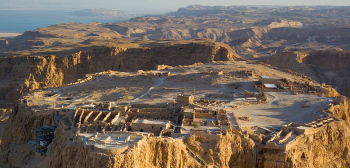Zealots were one of several New Testament period Jewish political movements. The Historian Josephus states, regarding this fourth of four major sects that existed in the first century A.D. (the others in the Bible being Pharisees, Sadducees and Essenes), "But of the fourth sect of Jewish philosophy (the zealots), Judas the Galilean was the author" (Antiquities of the Jews, Book 18, Chapter 1, Section 6).
Fausset's Bible Dictionary confirms there is a link between Judas the Galilean and these radical supporters of Judaism. This well known dictionary states the following.
"Led the rebellion in the days of the taxing . . . These 'Gaulonites' (Flavius Josephus also refers to this Judas as 'Judas a Gaulonite') were precursors of the Zealots . . ."
Easton's Bible Dictionary defines Zealots as "a sect of Jews which originated with Judas the Gaulonite."
Gamaliel, a well-known and respected Pharisee who was a member of the Sanhedrin, directly references these zealous individuals in the New Testament. He used what happened to Judas and his followers to urge the council to treat the apostles carefully (Acts 5:33 - 38)
Beliefs and Practices
This group were defenders of the Law (Torah) and of the national life of the Jewish people. They opposed the Roman occupation of Israel. Their purpose was to incite people into rebelling against the Roman Empire and expelling it from Palestine by force.

Zealots refused to pay tribute to the Romans because they felt it was a violation of the principle that God was the only king of Israel. They also expressed their dislike of Roman rule by violently targeting Romans and Greeks.
Zealots were also known for raiding Jewish habitations and killing Jews they considered apostate and collaborators. They also bore the name Sicarii from their custom of carrying Roman daggers hidden beneath their cloaks. They would use such weapons to stab anyone found committing a sacrilegious act or anything provoking anti-Jewish feeling.
The Zealots played a pivotal part in the First Jewish-Roman war (also known as The Great Revolt) that started in 66 A.D. They succeeded in taking over Jerusalem and holding it until 70 A.D., when Roman General Titus retook the city and destroyed it and Herod's Temple.
Last Stand at Masada
In 70 A.D., after Jerusalem was destroyed and the Temple burned to the ground, 960 zealots Jews took refuge by capturing the Roman fortress called Masada. Although a Legion was sent by Rome to recapture Masada, it failed to do so in the first few years of the campaign. The fortress held off the mighty Roman army even after the invention of new weapons to use against it.
In 73 A.D., the Romans finished a huge siege ramp made of earth that led to Masada. This ramp gave them the ability to use the full power of their newly made siege engines against the fortress walls.
When the fortress was finally stormed, the Romans found all the zealots had committed suicide. The bravery of these people led to Masada being modern Israel's most popular paid tourist attraction.
Jesus Calls a Rebel
Did you know that Jesus personally called one of these radical people to be his disciple? In the Bible his name is Simon the Zealot (Luke 6:15, Acts 1:13 NKJV). The Greek word for this type of person is Zelotes (Strong's Concordance #G2208) which means a partisan who burns with zeal for Jewish political independence. This disciple is also referred to, erroneously, as Simon the Canaanite in Matthew 10:4 and Mark 3:18.
And when it was day, He called His disciples to Him and chose from them twelve, whom He also named apostles . . . Matthew and Thomas; James, the son of Alpheus, and Simon who was called Zealot (Luke 6:13, 15, HBFV, see also Acts 1:13).
Then they (the apostles) returned to Jerusalem from the mountain called Mount of Olives, which is near Jerusalem, being about the distance of a Sabbath’s journey.
And after entering Jerusalem, they went up into the upper chamber, where both Peter and James were staying; and John and Andrew; Philip and Thomas; Bartholomew and Matthew; James, the son of Alpheus, and Simon the Zealot; and Jude, the brother of James (Acts 1:12 - 13, HBFV).